Before they began work on Sunday in the Park With George, Stephen Sondheim and James Lapine spent days at the Art Institute of Chicago absorbing George Surat’s painting A Sunday on La Grande Jatte—1884. Sondheim is quoted as remarking that Seurat’s painting of visitors to a Paris park already looked like a play—”a stage full of people.” Their days studying the painting, speaking with curators and listening to visitor comments fueled a musical that won a Pulitzer prize for drama, ran multiple times on Broadway, and now is a centerpiece of Pasadena Playhouse’s six-month celebration of the late composer. The play runs to March 19 to the delight of Sondheim fans, with more to come.
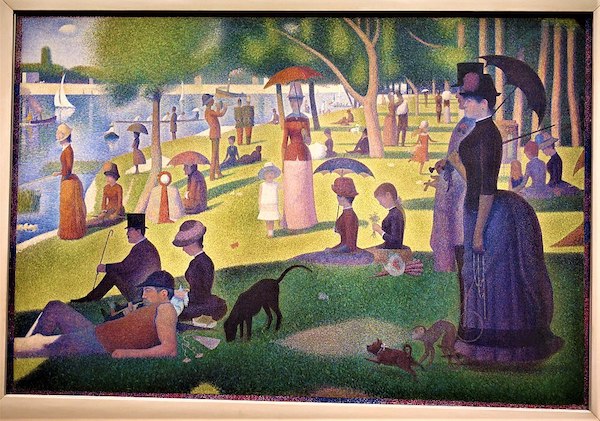
Sondheim and Lapine’s musical distills their insights and imaginings in Act I, bringing to life the figures in the painting along with the art world of 1884 when George Seurat was painting A Sunday Afternoon on the Island of La Grande Jatte. Seurat was not accepted by the Paris art establishment, but driven by his art, he captured the park’s “players” in dabs and dots of paint. In Act 2, fast forward to 1984 New York, the now-celebrated Seurat painting is the focus of a tribute exhibition by another artist named George, likely descended from Seurat. While Seurat never sold a painting during his life, the 1984 George is buffeted by contemporary pressures that accompany his success.
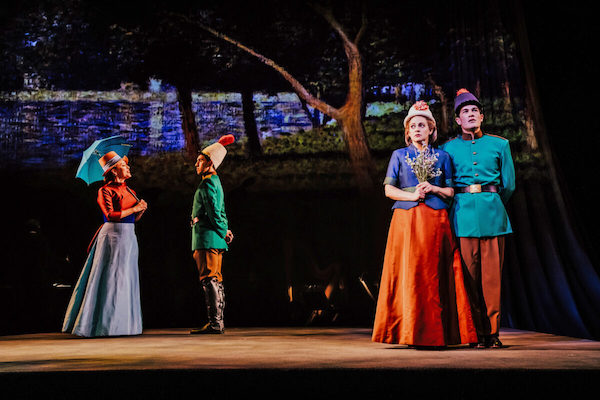
The director and many of the production team behind the Pasadena Playhouse production were involved in the highly praised 2016 concert staging at Lincoln Center that led to a Broadway run in 2017. The director Sarna Lapine (yes, she is a relative, the niece of James Lapine) received particular praise for connecting the artistic struggles in the second act in 1984 with Seurat’s world and struggles a century earlier.
Explaining her approach in a 2017 interview with American Theater magazine, Sarna Lapine pointed to the character of Dot, the artist’s mistress and model in the first act who returns at the second act conclusion.

“How incredible that the lover and the model who is also the artist’s muse in the first act, returns and by the end of the second act she’s become his teacher.” Lapine explained her approach. “The less literal I had to be about some of the period details, the better. I mean, they’re all the same people 100 years later, in a way, but the relationships have all shifted slightly. Also, in the first act, I was thinking: How literal do we have to make the painting? Maybe George only sees shapes and colors; maybe he only cares about bodies and space. We don’t have to fill all that in, that’s in our minds already.”
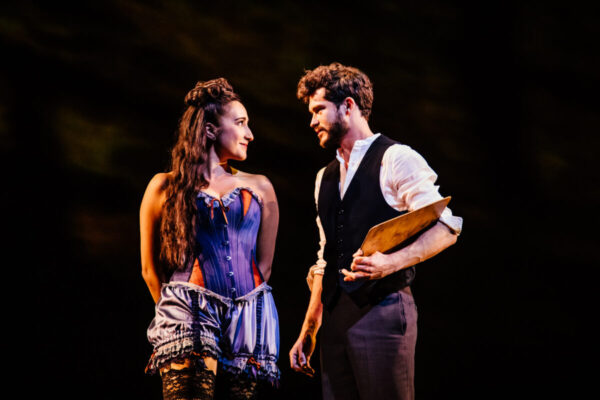
Sunday in the Park with George is choreographed by Alison Solomon, the first of three Sondheim shows Solomon will choreograph with Lapine directing, including Sweeney Todd near Washington D.C. and Into the Woods at Minneapolis Minnesota’s Guthrie Theater.
In a recent telephone interview Solomon talked about her role as choreographer in a musical that doesn’t really have any dance numbers. Also included in the call was Emily Tyra who is in the cast and also dance captain.
“The way Sarna works is to build the show together from the beginning with the prep work, design and concept,” Solomon explained, “Incorporating choreography or movement ensures the show is cohesive, moving seamlessly from scene to song and back again, no moment where the direction stops and the choreography begins, no moment when the acting stops and the singing begins.”

The time-traveling show requires the cast to inhabit one 19th century character in Act I and a different 20th century character in Act II.
“A major focus in the staging is the physicality of the different eras in the first and second act,” Solomon noted. “For example, in Act I, Emily portrays Yvonne, the snobbish wife of a successful artist and in Act II, she is Naomi, part of the technical team that brings George’s Chromolume installations to life.”
Tyra agreed, describing the different challenges in the two characters. “In the 1880s, corsets, long dresses with cinched waists, hats, and gloves, coupled with the cultural constrictions of the time, all affect both Yvonne’s posture and how she moves. By contrast, the clothes, undergarments, and cultural constrictions were freer for women in the art world of 1980’s New York, and Naomi’s posture and movement is that of a modern woman and part of the artist’s crew.”
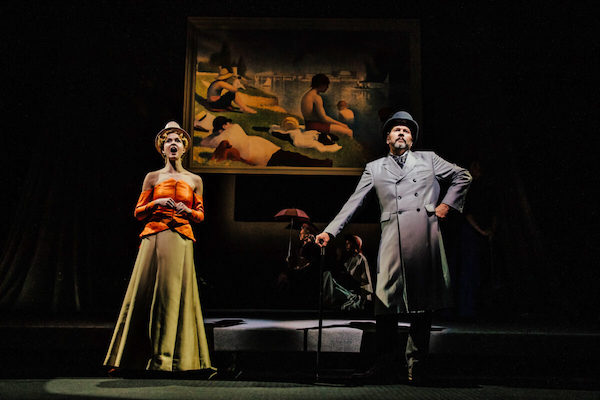
Throughout the Act I rehearsals, Lapine and Solomon worked with the actors to develop how their character would move in the world of 1884. Both Solomon and Tyra agreed Act II is easier. “Even though we now are almost four decades from 1984 New York, the clothing, culture and how people moved then is much closer to how people dress and move now.” Solomon noted.
Beyond her two characters, Tyra has an additional role as Dance Captain. Once the show opens, she is charged with keeping that time sensitive movement reinforced with the performers.
The director and choreographer first met about ten years ago when both were associate directors on Broadway, but never working on the same projects.
“We finally worked together on a concert production of Fiddler on the Roof,” Solomon recalled, “We found we have similar sensibilities about the role of choreography in musicals.”
This is the first Sondheim show for both Solomon and Tyra. “Throughout the preparation and rehearsal, I was constantly reminded how well-crafted the show is, everything is on the page from the moment we leave the starting gate,” Solomon noted.

Tyra agreed. “Everything an actor needs is in the book and the score allows an actor to use all of your skills. Living with this music on a daily basis is the most wonderful thing, even if there are some songs that always bring me to tears.”
Pressed, Tyra pointed to the song “Beautiful” in Act I where an elderly woman bemoans how things are changing and used to be “beautiful.” She also singled out the title song. “At the end of Act I, each character is a color and each has their theme, then the artist arranges them into what we know is the picture and it all comes together. That song also opens Act II but segues into the characters complaining about the heat and being stuck with the others in the painting forever. That’s the sly humor that is threaded through the show,” Tyra adds.
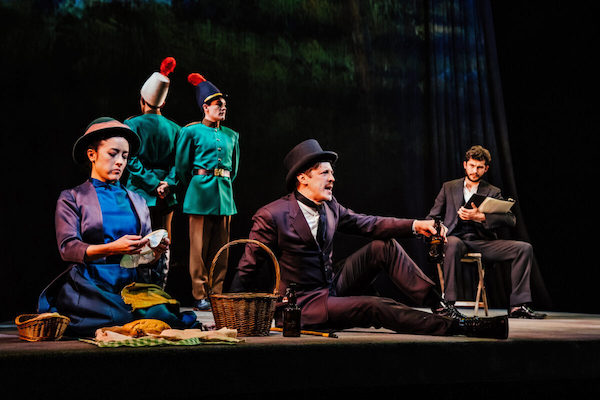
Not so much a favorite recurring moment, Solomon finds her favorite moments shift day to day. “Something different catches me each rehearsal as the performances grow. I’m touched whenever something clicks for an actor.”
The Sondheim Celebration continues with a full stage production of A Little Night Music (April 25-May 21), plus concerts, workshops, community events, and a special concert with Bernadette Peters (original Dot/Marie in Sunday in the Park with George and original Witch in Into the Woods). Full Sondheim Celebration event line up at Pasadena Playhouse.
Sunday in the Park with George at the Pasadena Playhouse, 39 S. El Molino, Pasadena; Tues.-Fri., 8 pm, Sat., 2 & 8 pm, Sun., 2 &7 pm, $44-$167. Pasadena Playhouse Tickets & Events.
